How to do lunges: A guide to lunges, bodyweight exercises, and more
Learn how to do lunges and increase your lower body strength
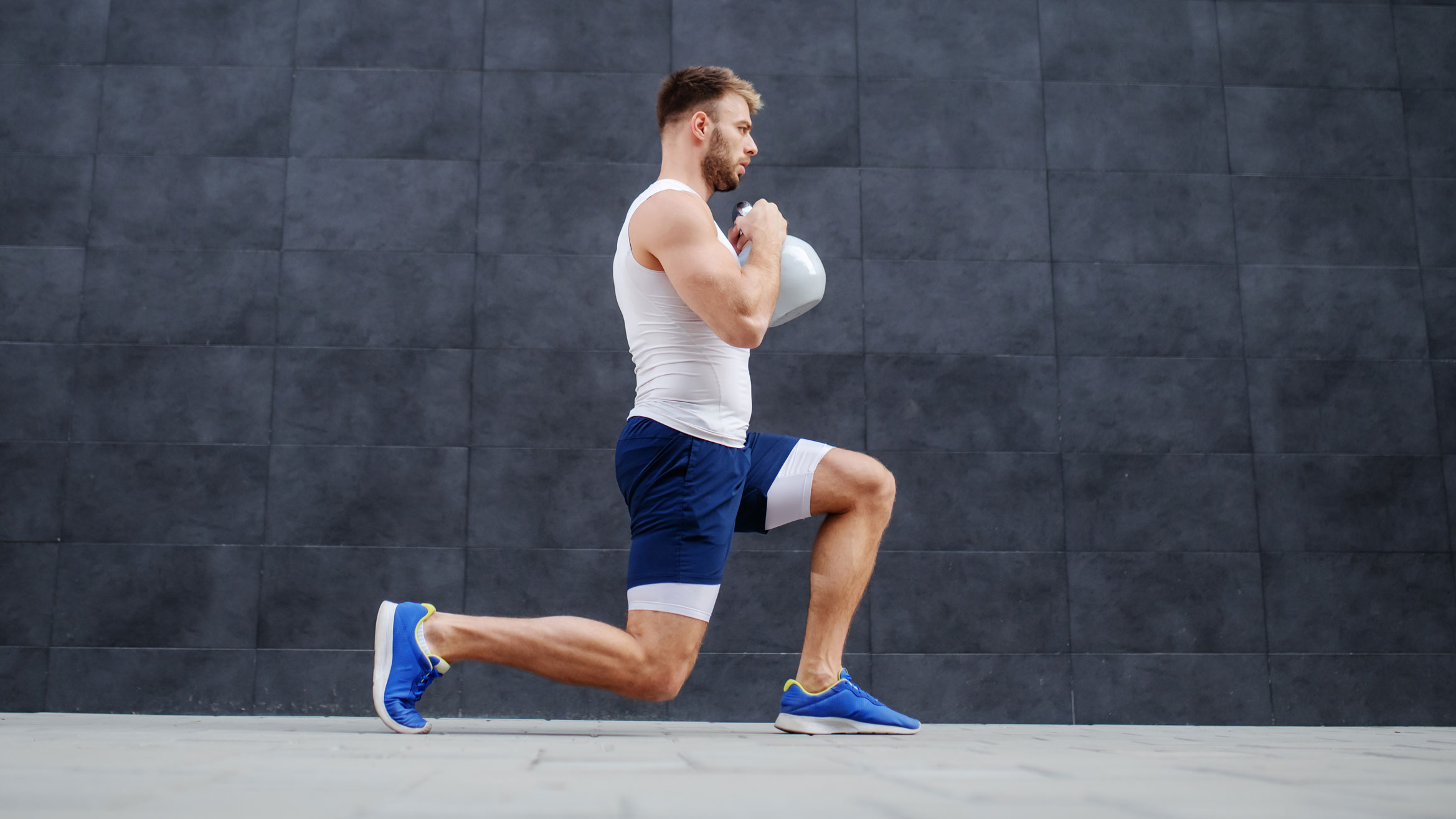

Want to know how to do lunges in order to boost your next leg day workout? With this essential move under your belt, you’ll be empowered to do more with your workouts and to build muscle in your lower body. Much like a glutes and hamstrings workout, lunges are a great exercise to add to fat-burning workouts too, to push yourself that little bit harder.
Working on your lower body strength can only benefit your progression, and it feeds into so many other forms of exercise, from the stability you need for yoga to your form when weight lifting. If you want to work on feeling, and looking, stronger, then learning how to do a lunge with the proper form will help you see plenty of benefits.
There’s even evidence from researchers in Stockholm that an exercise program that included forward lunges improved running speed in young football players. So, perfecting your lunge might even help you shave a few seconds off your personal best too.
Lunges are a versatile exercise that everyone can implement as they workouts to see a difference. Keep reading to find out just how to effectively lunge, as well as the common mistakes that you might be making.

Having a strong and mobile lower body is one of the most important factors in staying active: whether you’re getting back into weightlifting at the gym, you’re taking up yoga or you simply want to keep up with your dog on long walks. Hip mobility will also help in life: as one of the body’s key “hinges” which works every time you sit down and stand up, strong and supple hips will keep you healthy even into old age.
Lunges really are for everyone. Below you can find some tips on how to do a lunge effectively, as well as some form tips, common mistakes and variations to hit different muscle groups. Happy lunging.
How to do lunges
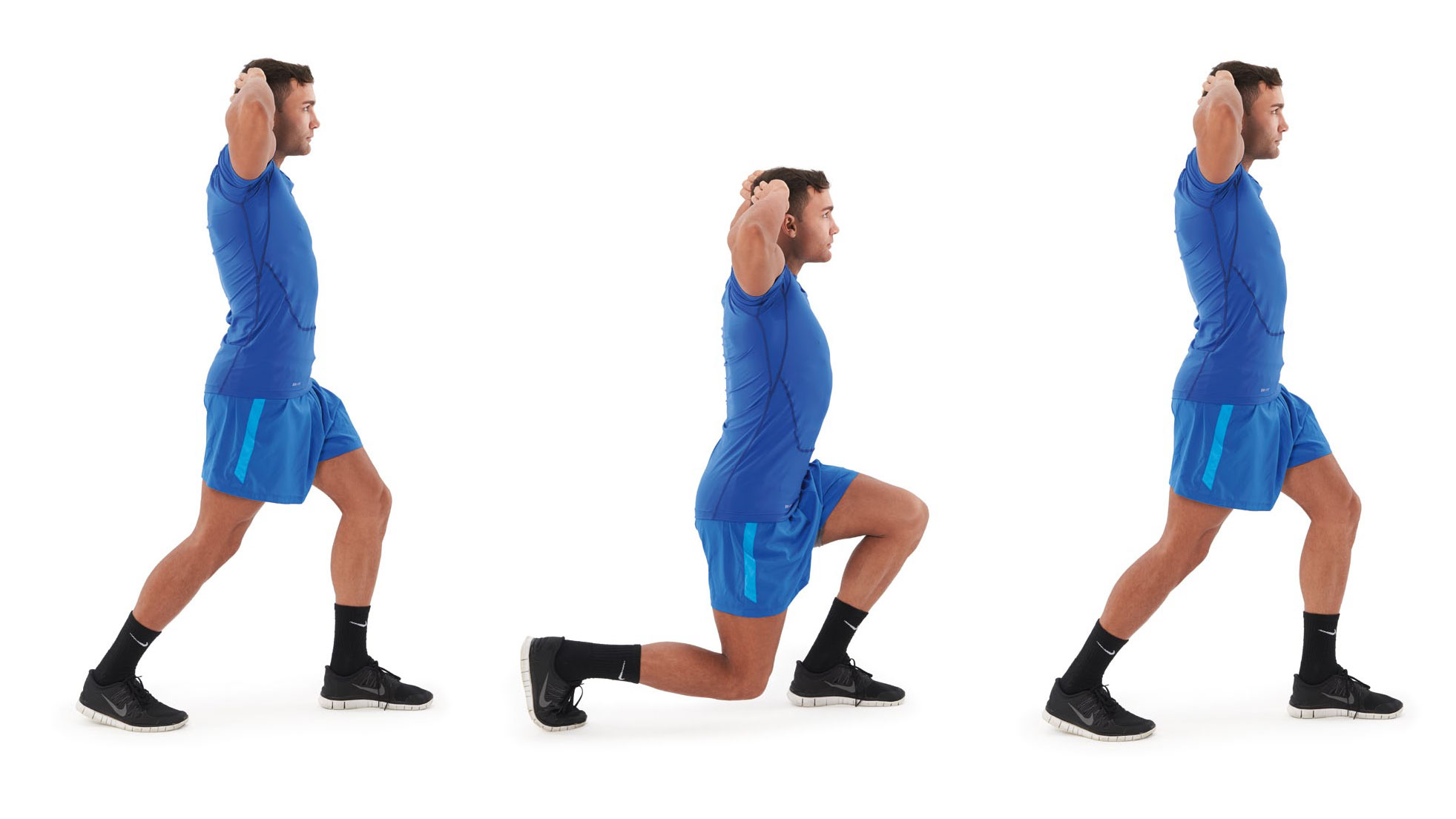
The bodyweight lunge is a classic exercise that provides a good workout for the quads and calves. This simple exercise loosens your groin and glutes, and promotes hip mobility.
Start your week with achievable workout ideas, health tips and wellbeing advice in your inbox.
- Get your left leg slightly forward and your right leg slightly back. Then place your hands behind your head, your shoulders back and keep your core braced.
- This exercise can also be performed with your hands on your hips, or with your arms crossed across your chest.
- Next, step forward with your left leg, slowly lowering your body until your right knee is almost touching the floor. Then pause for a few seconds.
- Quickly push yourself back to the starting position. That’s one repetition. Remember to alter the leading leg during the workouts.
How to do lunges: Form tips and common lunge mistakes
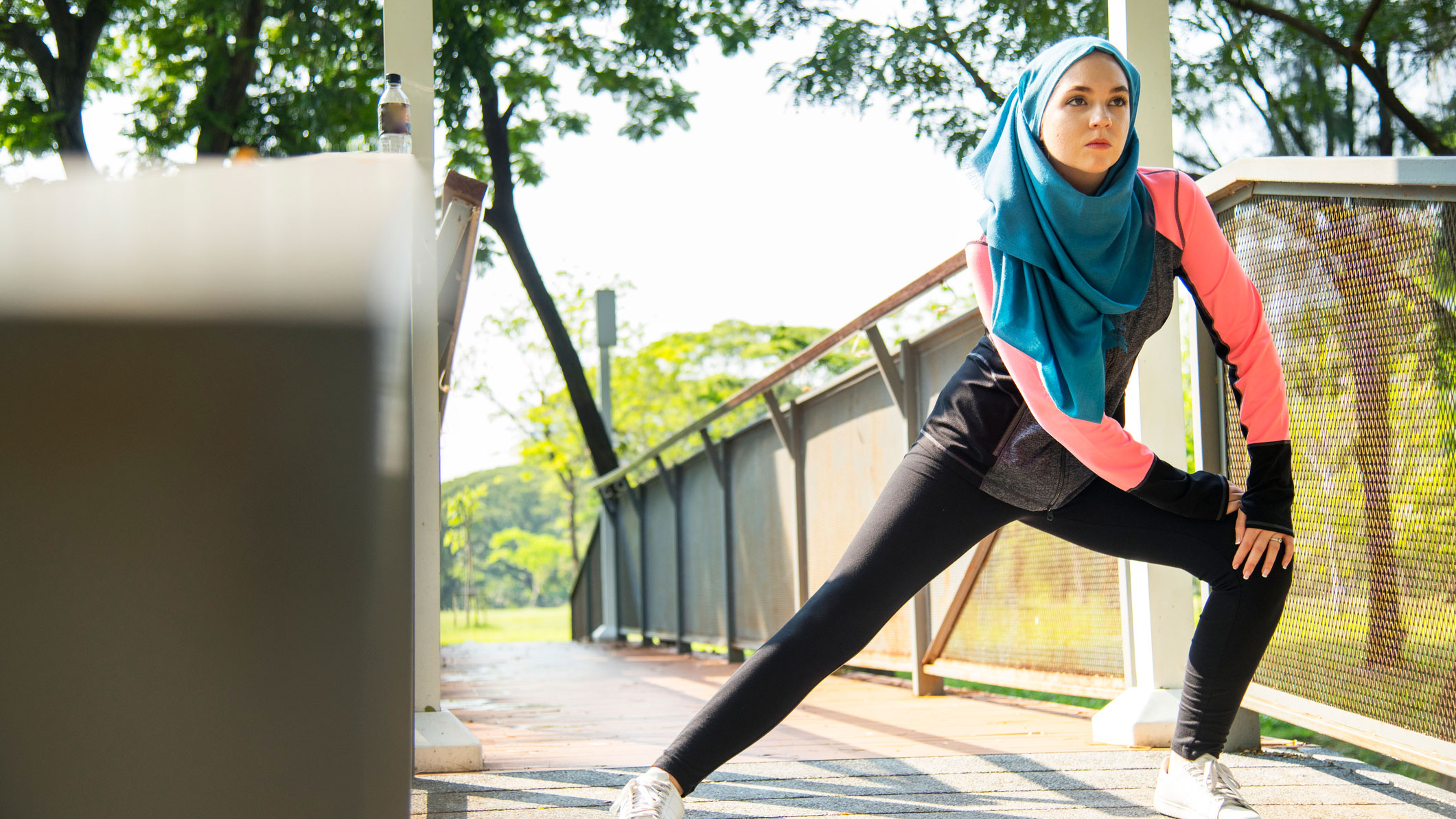
A side lunge, one of the lunge variations which loosens your groin and glute muscles even further.
Lunges can sometimes be tricky to balance effectively, so you need to make sure your form matches the diagrams above to perform the move in a safe, functional way. Keep your head up and shoulders back throughout the movement, as this will keep your back straight and your centre of gravity in the right place.
If you suffer from existing mobility issues or joint pain, consult a professional, such as a personal trainer or a doctor, before trying the lunge. Otherwise, don’t try and lunge lower than your knees and hips will allow: just go as far as you’re able to without causing yourself discomfort. In addition, always warm up before trying this exercise.
Variation: Low side-to-side lunge
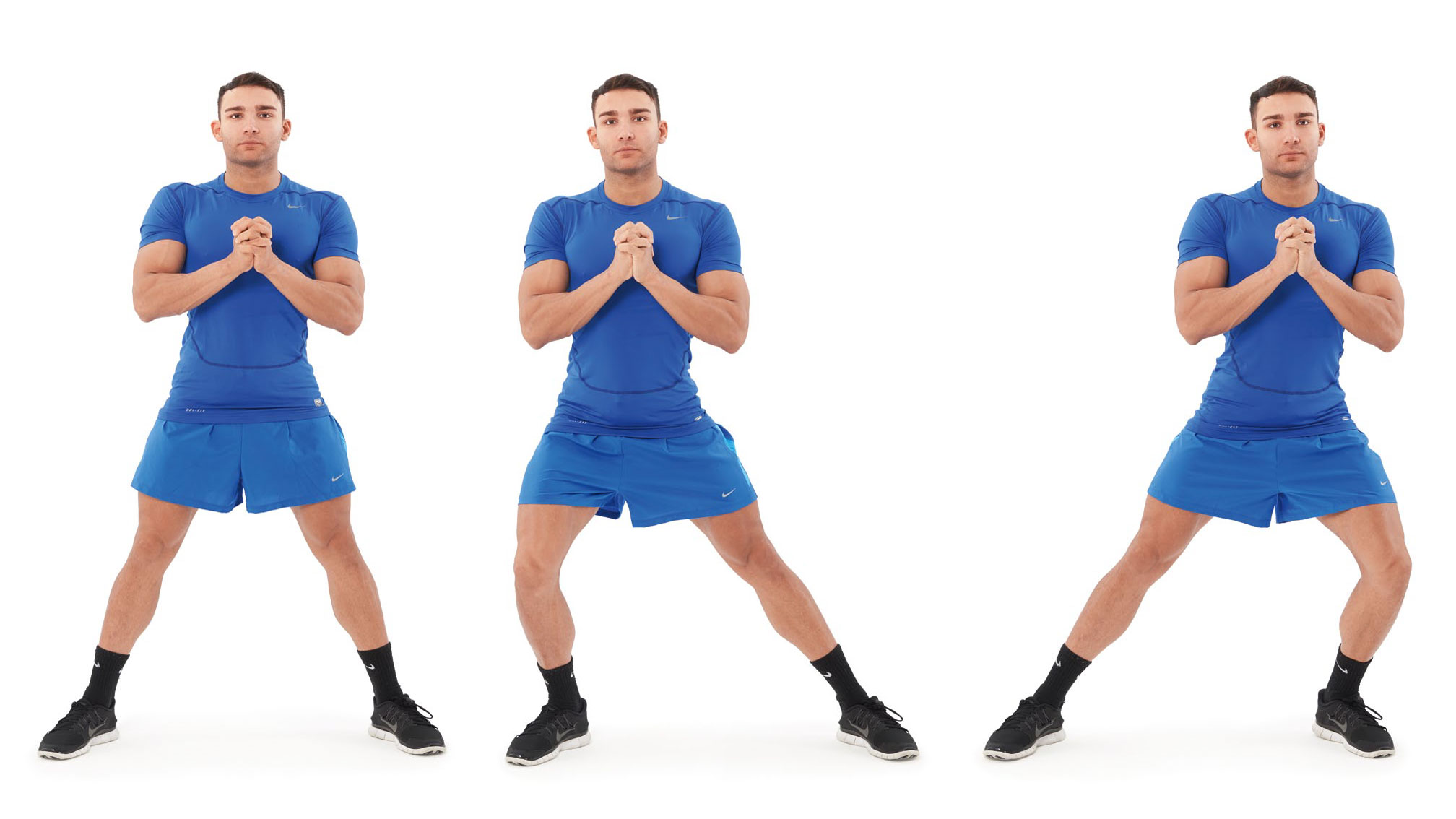
This simple exercise loosens your groin and glutes, and promotes hip mobility.
- Stand up tall, with your feet roughly twice shoulder-width apart, and your hands clasped in front of your chest.
- Bend your right knee and use it to lower your body towards the ground. Your left leg should be as straight as possible, and your upper body should be still.
- Without returning to the starting position, reverse the movement, shifting your weight to your left leg, which should now be bent at the knee, with your right leg straightened. Keep this going for at least 30 seconds.
Variation: Dumbbell lunge
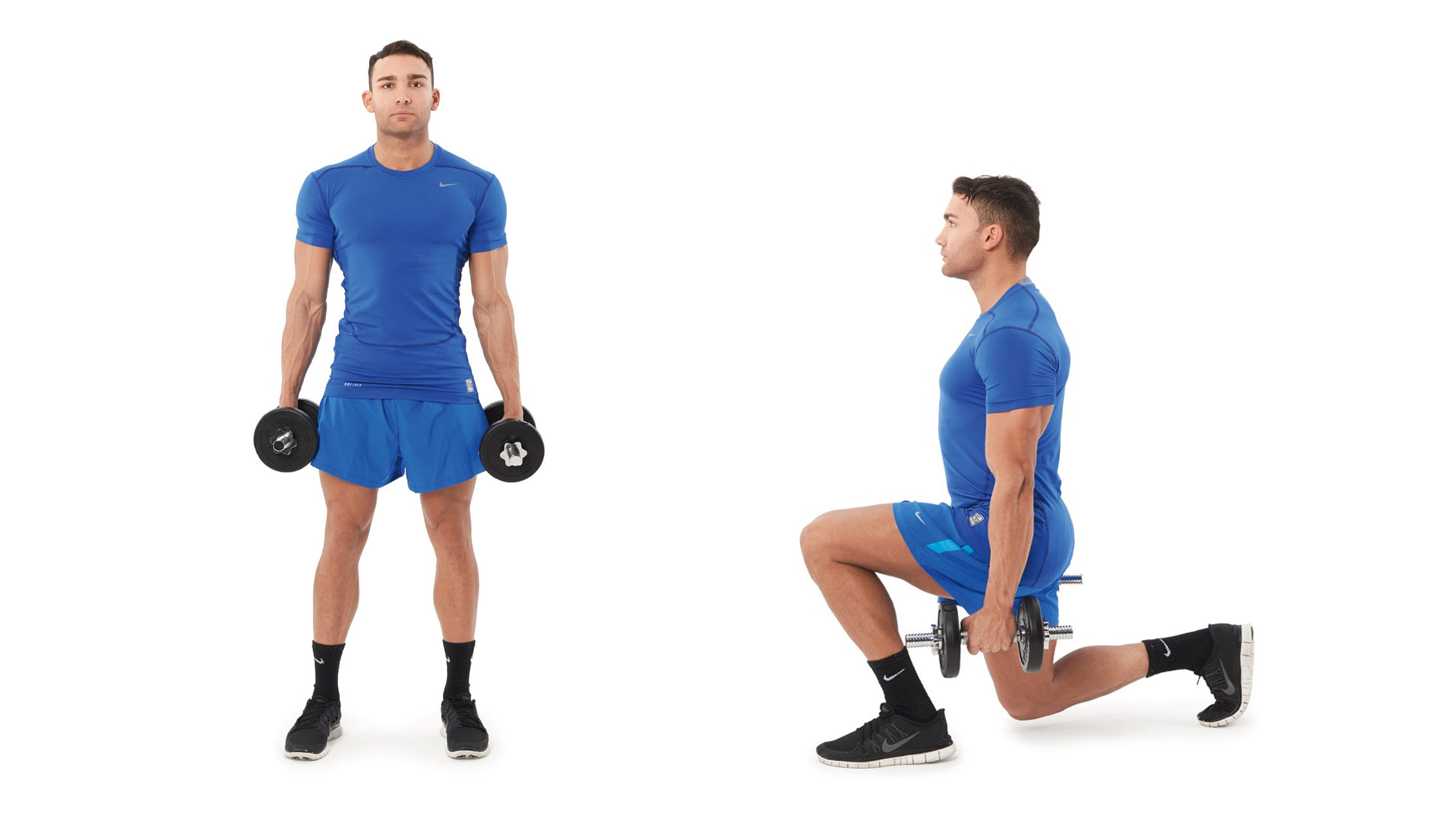
This variant on the bodyweight lunge adds weights, to provide a workout for your arms, quads and calves.
- Start by standing up tall, with your feet shoulder-width apart, holding a dumbbell in each hand.
- Keeping your upper body and arms in the same position, lunge forward with your left leg. At the lowest position, your right knee should almost touch the floor.
- Pause for a few seconds, then return to the starting position. Reverse the movement, lunging forward with your right leg.
Variation: Split jump
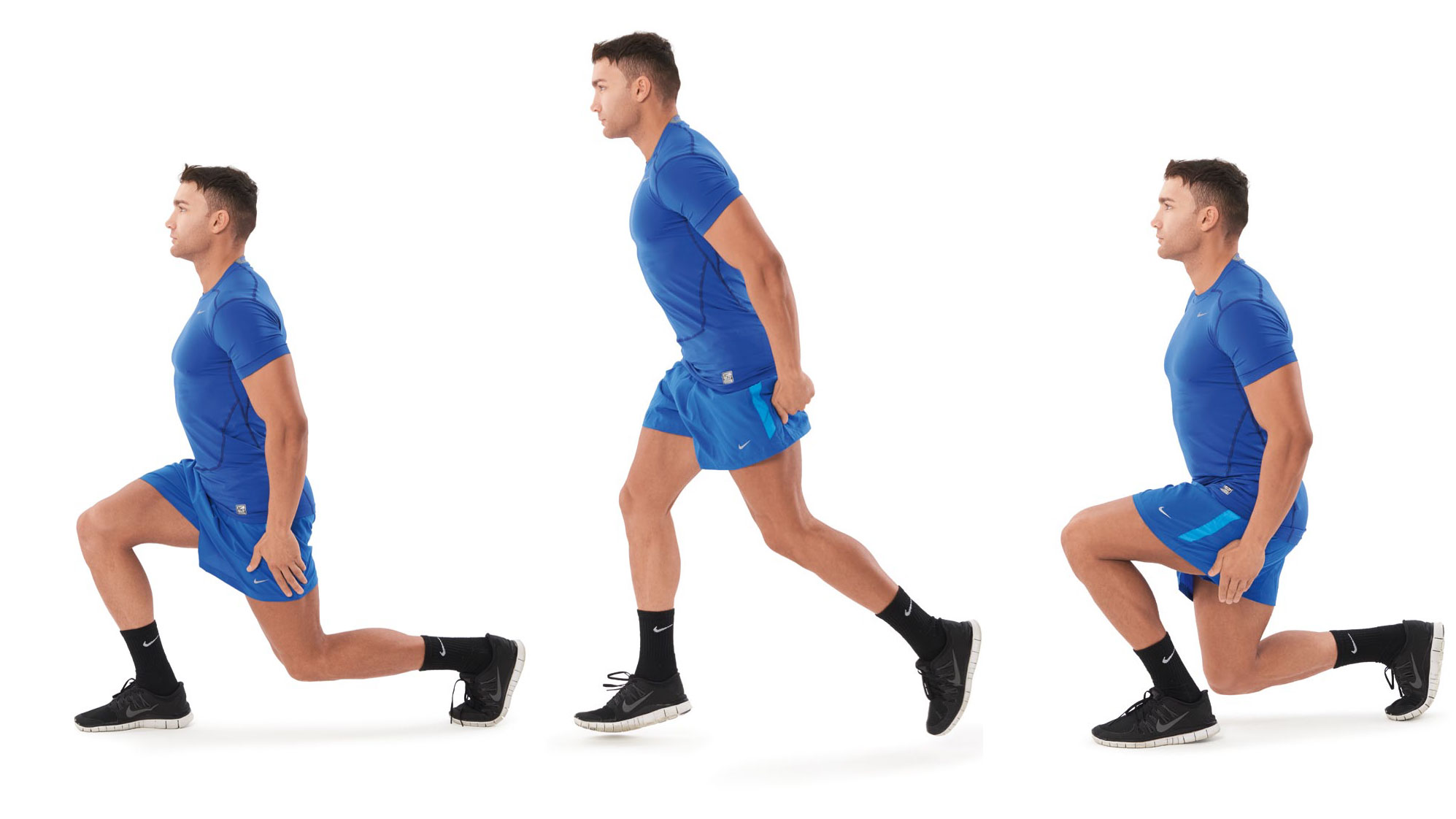
The split jump offers a more dynamic, energetic take on the classic lunge.
- Crouch down in a lunge position, with your left foot forward (bent at the knee), and your right foot back. Make sure your hands remain down by your sides.
- Without significantly moving your upper body, jump upwards and forwards. As you jump, scissor-kick your legs, so that your right foot comes forward and your left foot goes
- backwards.
- Land and go back down into the lunge position. Your right foot should be forward, and your left foot back.
Liked this?
Matt Evans is an experienced health and fitness journalist and is currently Fitness and Wellbeing Editor at TechRadar, covering all things exercise and nutrition on Fit&Well's tech-focused sister site. Matt originally discovered exercise through martial arts: he holds a black belt in Karate and remains a keen runner, gym-goer, and infrequent yogi. His top fitness tip? Stretch.
